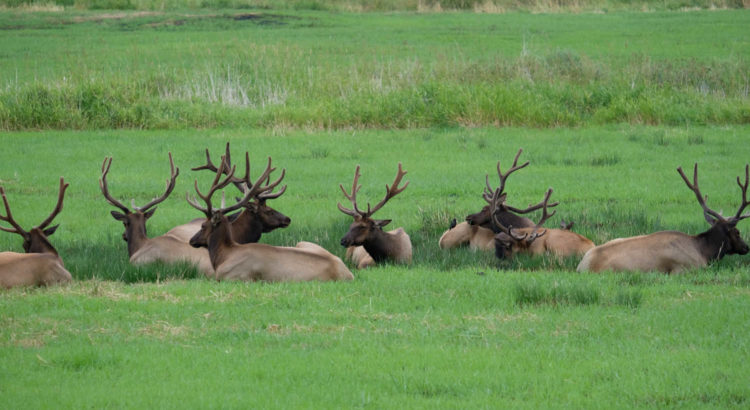Deer meat is already highly valued by gourmets, but can it be still improved? The research team of Dr. Anna Kononiuk from the Institute of Animal Reproduction and Food Research PAS works on enhancing the the quality of red deer meat through development of innovative feed additives.
Red deer is an increasingly popular meat in recent years, also in Poland. Unfortunately, there are no feed additives on the market which are strictly dedicated to deer. This may soon change thanks to the research team of Dr. Anna Kononiuk, which is carrying out a project funded by „Inkubator Innowacyjności 4.0” entitled „Feed additive for feeding deer after a reproductive period, intended for meat raw material”. Feed additives – as the name suggests – are nothing but additives to feed. They do not replace normal food, but when properly supplemented, they can offer various benefits to the animal. We asked Dr. Anna Kononiuk are the functions of the feed additive she is developing – both for animals and for consumers.
Marcin Powęska: How do we currently feed deer?
Dr. Anna Kononiuk: There are no supplements for deer available on the market that could influence the condition of the animal and the quality of its meat. They are either fed with fodder for cows (it is also a ruminant), or with no mixed feed at all – they are only given what is found in the forest plus alfalfa or hay. It’s not a professionally matched feed. To meet the market expectations, we decided to develop a dedicated feed supplement for deer to improve the quality of their meat.
MP: When is the best time to give such a feed supplement to an animal?
AK: It is meant to be administered in the autumn and winter, that is after the end of the reproductive period. This is the time when males are weakened after the roaring season, and females need strengthening during the development of pregnancy. Our supplement is meant to improve the condition of the animals, but also affect the quality of the meat that will be harvested, since the deer hunting season falls during the same period.
MP: There has been one supplement developed for males and females? What is their composition?
AK: As part of the experiment, we developed two different supplements – one targeting animal conditions and the other meat quality. I can’t pinpoint the exact differences, nor can I present the composition of these feeds as they are protected by patent rights. Our experiments made it possible to determine the dosage affecting changes in the condition and quality of the raw meat.
MP: Are similar feed additives for deer available worldwide?
AK: Commercially available are only feed additives that affect antler growth in deer. None improve the condition of the animals, much less the quality of their meat. That’s what inspired us to take up the challenge. When our feed additive hits the market, it will be the first of its kind.
MP: At what stage is your team’s research now?
AK: The feed additives have already been tested on deer and we are completing the results that show how it affects the condition of the animals. We are at the stage of statistical analyses of the results and summarizing the whole project.
MP: Has meat from deer fed with experimental feed additives been tested in restaurant conditions yet? Are there any taste differences?
AK: Yes, deer from animals fed with our additives have already been served to guests in restaurants and received positive reviews. Consumers were delighted with the meat and the restaurants appreciated our input, because for them it is not easy to find good quality cervid.
MP: What are your research plans for the future?
AK: We are currently focusing on the feed additives we have developed and trying to find customers for them. Surely they can still be improved and more parameters can be studied to determine their usefulness, but this takes time. At the moment we are satisfied with the progress of the work, but we are looking forward to more.



